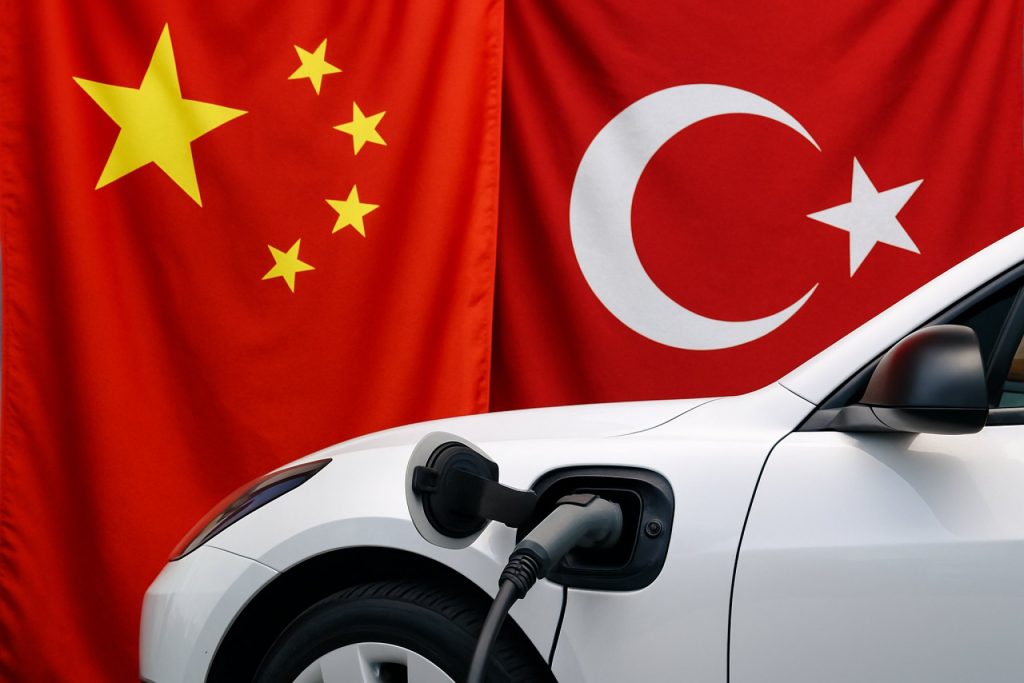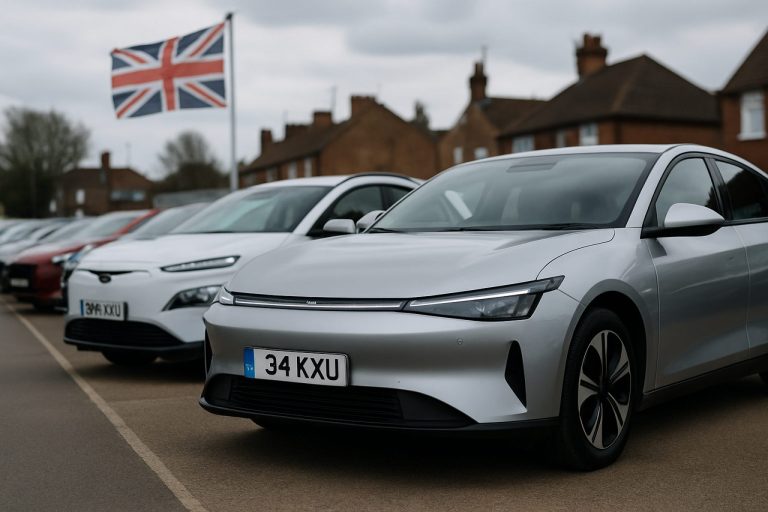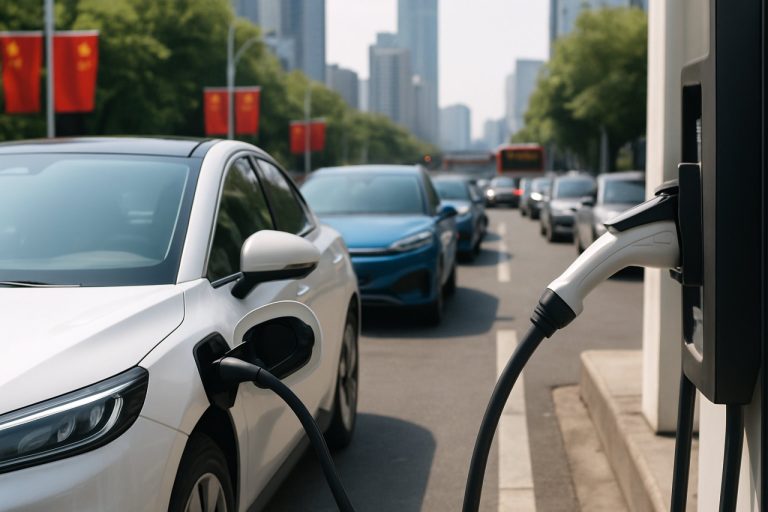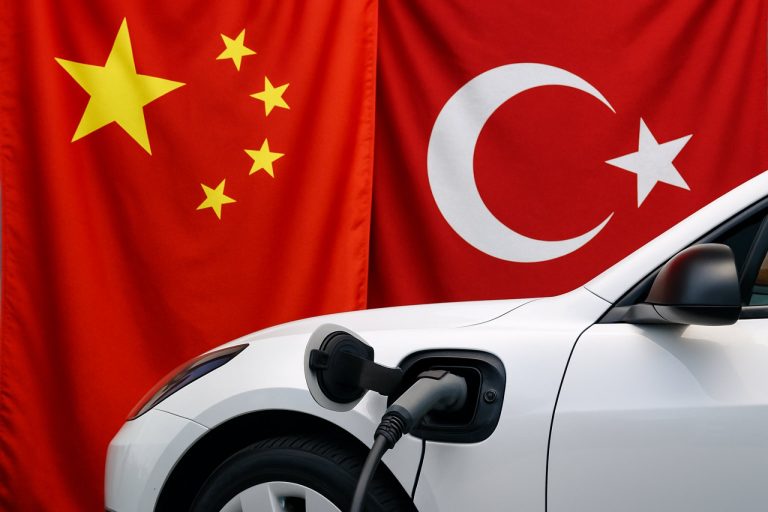
- Chinese electric vehicle (EV) manufacturers are shifting production to Türkiye to navigate Western tariffs and expand European market access.
- Türkiye’s strategic location and customs union with the EU enable Chinese EVs made locally to bypass EU import penalties.
- Major Chinese automakers, including BYD and Chery, are investing in Turkish facilities, promising job creation and increased economic activity.
- Türkiye offers incentives for EV adoption, making it an attractive growth market for both producers and consumers.
- The Turkish government enforces conditions on foreign automakers, demanding local investment and manufacturing to unlock market access.
- Concerns remain over limited technology transfer from China, with fears Türkiye may become an assembly hub rather than an innovation leader.
- This marks a pivotal moment for Türkiye to secure deeper industry participation and long-term benefit from the global EV supply chain shift.
A current of economic ambition and geopolitical rivalry courses through the heart of Türkiye’s industrial cities. As trade barriers rise and Western powers close ranks against Beijing’s electric vehicle juggernaut, China’s auto titans are quietly shifting gears and redrawing the global map of EV manufacturing—and Türkiye stands firmly in their crosshairs.
Shift in the Global Supply Chain
Smoke once trailed from distant Chinese factories, but today that industrial energy is migrating west. With Washington and Brussels erecting steep tariffs and framing Chinese EVs as unwelcome invaders, China has unleashed a masterstroke: move the means of production, not just the products. The heat of policy has pushed Chinese automakers to seek out not just cheaper labor, but new strategic strongholds.
Türkiye, perched between Asia and Europe, pulses as the pivotal point in this strategy. Manisa, now home to BYD’s upcoming $1 billion flagship facility, shivers with anticipation—soon to produce at least 150,000 electric vehicles a year, turning the city into a future-facing automotive powerhouse by 2026. At the Black Sea, Samsun is days away from welcoming Chery’s assembly lines. Inland, Eskişehir is claimed by SWM Motors, promising a fresh crop of EVs that will power not just Turkish roads, but those stretching toward Europe and beyond.
Protectionism and Opportunity
Escalating tariffs—an echo of a wider protectionist symphony—have effectively locked Chinese carmakers out of Western markets. But Türkiye opens doors that would otherwise be slammed shut. Thanks to its customs union agreement with the European Union, vehicles made within Turkish borders can slip into EU markets with ease, circumventing punitive border charges.
Yet opportunity is a two-way street. Ankara, eager for foreign capital yet wary of becoming just another outlet for foreign goods, has laid down its own rules. Newcomers must sow deep roots: widespread dealership networks, local call centers, and, crucially, tangible investments in domestic manufacturing. Türkiye’s hefty 40% import tax on Chinese EVs stings—unless those automakers bring their factories, jobs, and know-how to Turkish soil.
The Allure of a Burgeoning Market
Local demand isn’t a side note—it’s a headline. Sky-high fuel prices and favorable government policies tilt the Turkish market in favor of electrification. Incentives—ranging from tax breaks to direct subsidies—sweeten the pot for Turkish buyers, making EVs a status symbol and a future-facing necessity. China’s automakers see a chance not just to assemble, but to sell.
And Türkiye itself is hungry for the rewards: the promise of up to 5,000 new jobs from a single BYD plant, new cash flows, revitalized engineering sectors, and a plausible claim to high-tech sophistication. These are not dreams—they are tangible, imminent prospects capable of transforming local economies, neighborhoods, and the country’s industrial profile.
The Technology Transfer Mirage
Yet under the glare of these bright possibilities, shadows spread. Will Turkish workers simply tighten bolts on Chinese-designed and Chinese-powered vehicles? Critics warn that, without deeper collaboration, Türkiye risks playing second fiddle—hosting factories but locked out of the next generation’s design workshops and R&D hubs.
Chinese automakers move cautiously, wary of leaking crucial intellectual property. Their government urges careful guarding of technological secrets, especially as deals with foreign partners multiply. Advanced battery designs, software innovations, and artificial intelligence remain tightly held in Shanghai and Shenzhen, even as assembly moves west. Türkiye’s own champion, TOGG, and the emerging domestic sector may find themselves squeezed between national ambition and foreign dominance.
A Defining Test for Türkiye’s Future
This moment brims with urgency. Türkiye’s leaders must negotiate not just for jobs, but for genuine participation in the electric revolution—joint ventures, meaningful technology transfer, and integration into global supply networks rather than relegation to peripheral roles.
The recalibration of global EV supply chains reveals a deeper truth: as nations contest their industrial and technological futures, the lines between cooperation and rivalry blur. Türkiye stands at a historic crossroads, tasked with transforming itself from a simple passageway for foreign capital into an engine room for its own ambitions.
Curious about the global business landscape and pivotal shifts in industry? Explore more at Financial Times and The Wall Street Journal.
Key Takeaway: China’s EV expansion in Türkiye isn’t just a story of production—it’s a contest over who shapes the future of clean mobility, and whether Türkiye can capture more than just the echo of innovation.
China’s EV Blitz in Türkiye: What You Need to Know, Hidden Industry Risks & What Turkish Buyers Can Expect Next
Türkiye’s Electric Vehicle Revolution: Behind the Hype
Türkiye is fast becoming the ground zero for China’s new electric vehicle (EV) manufacturing expansion, offering critical opportunities—and posing unique challenges—for industry, workers, and car buyers alike. But beyond the headlines about billion-dollar plants and thousands of jobs, what does this shift really mean for the Turkish and European markets?
Additional Facts: What’s Happening Beneath the Surface?
1. The Strategic Customs Union Edge:
Türkiye’s customs union with the EU (since 1995) enables vehicles manufactured in Türkiye to enter the European single market tariff-free, providing Chinese automakers a unique backdoor as the EU moves to impose aggressive tariffs (up to 38.1%) on Chinese-made EVs ([Reuters](https://www.reuters.com)).
2. Multi-Billion Dollar Commitments:
– BYD isn’t alone: Chery and SWM Motors have each committed to launching local assembly lines, with investment totals in the billions.
– In 2023, Türkiye’s EV sales reached record highs—a 600% surge, with over 70,000 EVs sold, reflecting skyrocketing local demand.
3. Türkiye as an Export Powerhouse:
Türkiye is already Europe’s 6th largest auto manufacturer (OICA), exporting more in autos than it imports. This shows an established logistics and supplier network for foreign brands to tap into.
4. Regulatory Requirements:
Türkiye mandates that automakers build substantial local infrastructure:
– Dealership and aftercare networks
– Call centers with Turkish-language support
– Technology-sharing and R&D investments (on paper, though implementation has varied)
How-To & Life Hacks: Navigating the Turkish EV Market
1. How to Take Advantage of EV Incentives in Türkiye
– Apply for government grants—these can cut the upfront EV price by as much as 25%.
– Benefit from dramatically lower annual vehicle taxes for EVs compared to ICE (internal combustion engine) vehicles.
– Check for local charger credits in urban areas—some municipalities offer free public charging for a period.
2. What Turkish Buyers Should Watch Out For
– Warranty coverage: New Chinese plants may offer better warranty terms to build trust.
– Resale values: Historically, imported models have depreciated faster, but locally assembled EVs may retain value better.
– Charging infrastructure: Major cities (Istanbul, Ankara, İzmir) are rapidly rolling out chargers, but rural uptake is slow.
Real-World Use Cases & Industry Impact
For Turkish Industry:
– Up to 5,000 jobs at BYD’s Manisa facility alone.
– Export potential: EVs built in Türkiye are already finding buyers in Germany, France, and Italy.
– R&D: There’s potential for joint ventures—Türkiye could push for design centers and battery assembly technology.
For Europe:
– Türkiye-produced Chinese EVs will bypass new EU tariffs, keeping car prices lower for European consumers.
– European automakers face new price pressures; expect a wave of more affordable Turkish-made EVs in 2025–2026.
Market Forecast & Trends
Türkiye’s EV Market Trajectory:
– EVs are expected to comprise at least 10% of all new Turkish car sales by 2026 (up from 2.3% in 2023).
– Price wars are heating up: Entry-level EVs could fall under €20,000 for the first time.
– Battery gigafactories: CATL and other Chinese suppliers are rumored to be exploring Turkish joint ventures, which could further reduce costs.
Reviews & Comparisons
– BYD vs. Chery vs. SWM Motors: Early reviews suggest BYD is focusing on higher-tech models with European-style interiors, Chery is prioritizing affordability, and SWM is positioning as a family-friendly brand with range and value.
– TOGG, Türkiye’s National EV Champion: While still ramping up production, TOGG offers local tech and integration, but Chinese brands have an edge in price and global EV experience.
Controversies & Limitations
– Technology Transfer Doubts:
Despite contracts, concrete technology transfer—sharing proprietary battery chemistry or software—is limited. Most Turkish plants will initially operate as assembly lines. Without stronger local R&D, Türkiye risks being locked out of future EV breakthroughs ([Bloomberg](https://www.bloomberg.com)).
– EU Response:
With more Chinese-linked EVs set to flow into Europe, expect further regulatory scrutiny or even renegotiation of the Turkey-EU customs union.
– Geopolitical Risk:
Türkiye must balance economic perks with Western partners’ skepticism toward China-centric supply chains.
Features, Specs & Pricing (2024 Preview)
– Typical range for new Turkish-made Chinese EVs: 350-500 km (WLTP).
– Fast charging: Up to 120 kW—30% faster than most European rivals in the same price class.
– Expected starting prices: €18,000–€25,000 for compact crossovers (local subsidies may apply).
Security & Sustainability
– Battery recycling infrastructure is still nascent—potential environmental challenge.
– Data security: Connectivity features in Chinese EVs have sparked privacy debate in the US and EU; this issue may soon reach Türkiye.
Pros & Cons Overview
| Pros | Cons |
|———————————————|——————————————-|
| More affordable EVs for Turkish & EU buyers | Technology transfer remains uncertain |
| Job creation & export growth | Potential dependency on Chinese suppliers |
| Modernized manufacturing sector | Battery recycling concerns |
| Boost to local charging infrastructure | Data & cybersecurity concerns |
Most Pressing Questions Answered
Q: Will EVs get cheaper for Turkish and EU buyers?
A: Yes, bypassing EU tariffs via Turkish assembly will make EVs more affordable—especially entry and mid-level models.
Q: Does this threaten Türkiye’s own automakers like TOGG?
A: Competition will intensify, but it also spurs innovation and may drive partnerships or joint ventures.
Q: What’s in it for local communities beyond jobs?
A: New supply chains for batteries and electronics, increased industrial tax revenue, and improved transport infrastructure.
Q: Are Chinese automakers here to stay or will the political winds shift?
A: As long as Türkiye remains in the EU customs union and demand grows, China’s presence is likely to deepen, though political risks persist.
—
Actionable Next Steps & Quick Tips
– For Turkish buyers: Watch for new model launches in 2025–26, as incentives will likely make these EVs far more affordable.
– For local businesses: Prepare for supply chain opportunities—components, logistics, and EV servicing will all see robust growth.
– For policymakers: Push automakers for real, enforceable R&D investment clauses and update recycling regulations to accommodate a surge in battery waste.
—
Stay updated on global economic shifts and the electric vehicle market at Financial Times and The Wall Street Journal.
—
Key Takeaway:
Türkiye is at the center of a dramatic EV industry transformation. While Chinese investment promises jobs and tech, the nation’s challenge is ensuring it also exports—and develops—innovation, not just cars. Remain vigilant, negotiate for technology sharing, and make the most of incentives as the future of mobility arrives.



